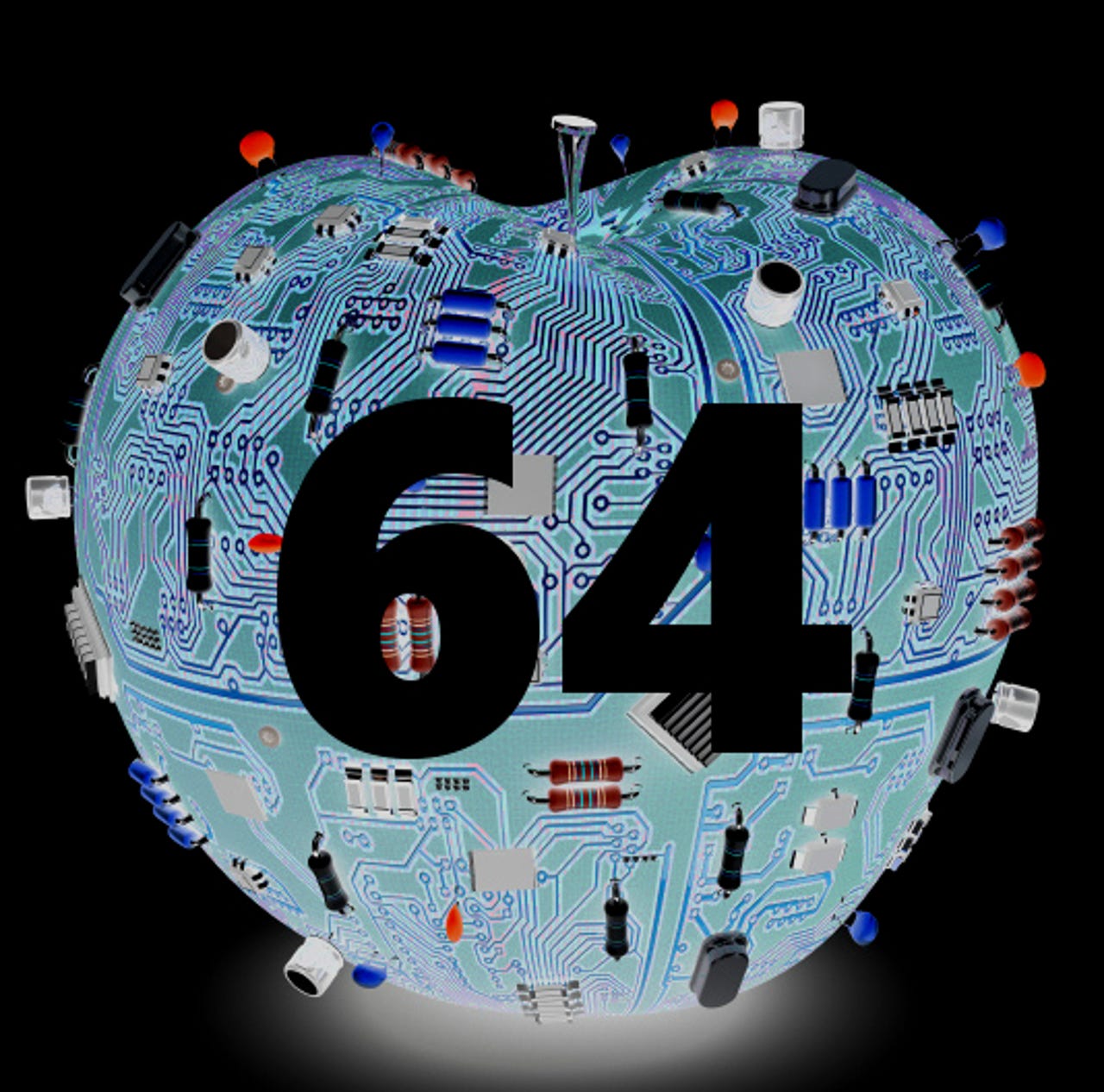2015: 64-bit ARM chips in iPhone 5S serve up taste of Intel-free future for Apple

Like many others on the East Coast, I spent my lunch hour going through the various computer industry liveblogs of Apple's iPhone 5C and 5S launch event.
While many of the things we heard about both devices were covered extensively in various leaks and analysis in weeks prior, by far the most the most important new thing that was announced at the event was that the iPhone 5S uses a 64-bit ARM chip of Apple's own design, the A7.

Back in November of last year I postulated about the future roadmap for the semiconductors used in Apple's mobile and PC products. While it is surprising for many to see a 64-bit System on a Chip (SoC) on a smartphone so soon, I can certainly understand why Apple wanted to get one out into the wild.
The phrases "Forward-Thinking" and "Desktop Class" were thrown around during the launch event when discussing the iPhone 5S and the A7 processor. That stuff isn't just marketing hype in place here, it's a glimpse at the thought processes that are going on within Apple as it pertains to their long-term device and operating system strategy.
More iPhone and iOS 7
While a 64-bit SoC sounds like overkill for a smartphone, there are features within the iPhone 5S that will immediately benefit from or would not easily be possible without it.
Biometric authentication requires a significant amount of CPU horsepower to pull off without being sluggish, as would strong end-to-end VPN encryption, both of which are likely necessary for the iPhone to continue to attract corporate attention.
Image-processing features that are included in iOS 7 on the iPhone 5S also benefit highly from a 64-bit OS, although they can also be achieved on older models that support iOS 7, albeit run much slower.
And of course who can forget the games that are now possible with these chips as well, which up until now have been confined to advanced console systems like the XBOX 360 and the PlayStation 3, as well as gaming PCs.
These are the kind of things that were only possible on desktop computers less than 10 years ago. Yet now, with the advent of 64-bit SoCs, we're going to see them on mobile devices.
But this is just the tip of the iceberg. The reason why Apple wanted to get a 64-bit ARM chip into the wild is largely an issue of platform convergence.
I have discussed the concept of platform convergence a number of times in the column. I most recently talked about it in the context of the Ubuntu Edge, the Linux-based smartphone concept envisioned by Canonical that did not achieve its crowdsourced funding target.
To summarize, I expect that our smartphones will become the center of our computing experience and even extend themselves to tablets and the desktop, through a unified operating system that runs identically on all three form factors and is supplanted by back-end Cloud services which will do the heavy lifting for our line-of-business applications and data.
To take the concept even further, I expect that smartphones will become the "brain" of modular tablet and notebook PC designs, much like was envisioned for the Ubuntu Edge.
For this transformation to occur, the operating system must be converged first. I believe that within just a few years, all of the major players will have converged systems to offer.
Microsoft has already ported Windows to ARM and is unifying its developer target by bringing Windows Phone and Windows 8.x closer to API parity.
By virtue of its platform having the lion's share of line of business applications on the desktop, and with thousands of ISVs with over 20 years of code to migrate among them (not to mention purely internal Windows LOB apps at major corporations) the full transition to the Modern-style UI as it exists in Windows 8.X and Windows Phone will take years.
Google is clearly working on marrying Chrome OS with Android, and Apple has now taken the first step in its own convergence process by releasing its 1st-generation 64-bit SoC with the iPhone 5S.
Once the 5S -- and presumably also the iPad 5 which will sport a similar chip -- is in the hands of developers, the 64-bit app transition for Apple will be underway.
So the question is, what happens to Macs?
iOS and Mac OS X, much like Windows Phone 8 and Windows 8.x which share a core OS and kernel as well as APIs, also share a common architecture. They both use the same kernel and a shared developer environment.
AR + VR
At some point, iOS will end up on some kind of laptop or tablet convertible device using a 64-bit ARM chip of Apple's design.
I think that will happen sometime around 2015, when the future 64-bit SoCs are powerful enough to actually assume the type of creative content desktop workloads Macs are actually used for today, and private and public clouds have achieved a level of maturity to provide "Extreme SaaS" functionality that cannot be easily achieved on a low-power endpoint device with locally-installed apps.
Because both Mac OS X and iOS are now 64-bit, it will be easier to port the more demanding (but fewer in number) Mac apps to a single, converged future-state Apple device OS.
Whether that OS is called Mac OS or iOS or something completely new is irrelevant considering how much DNA is already shared between the two.
Is the 64-bit A7 in the iPhone 5S a sign of a platform converged future at Apple? Talk Back and Let Me Know.